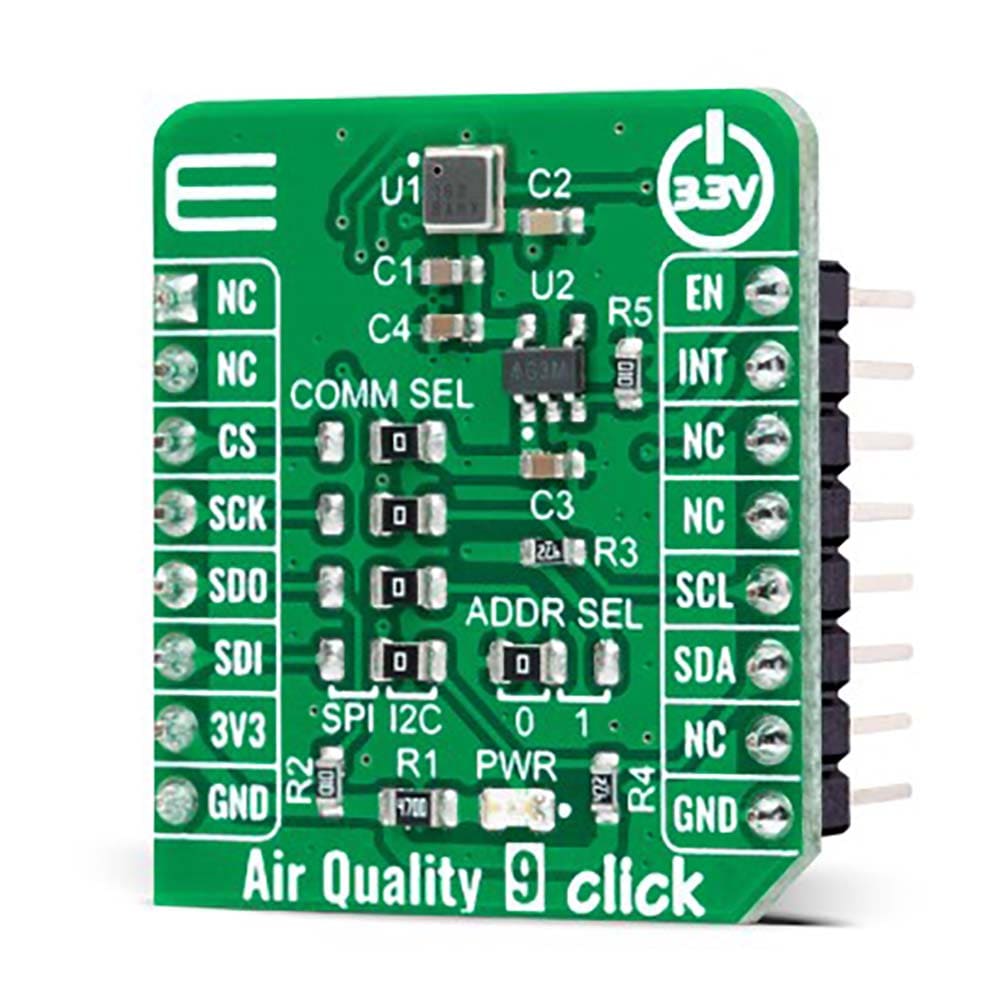
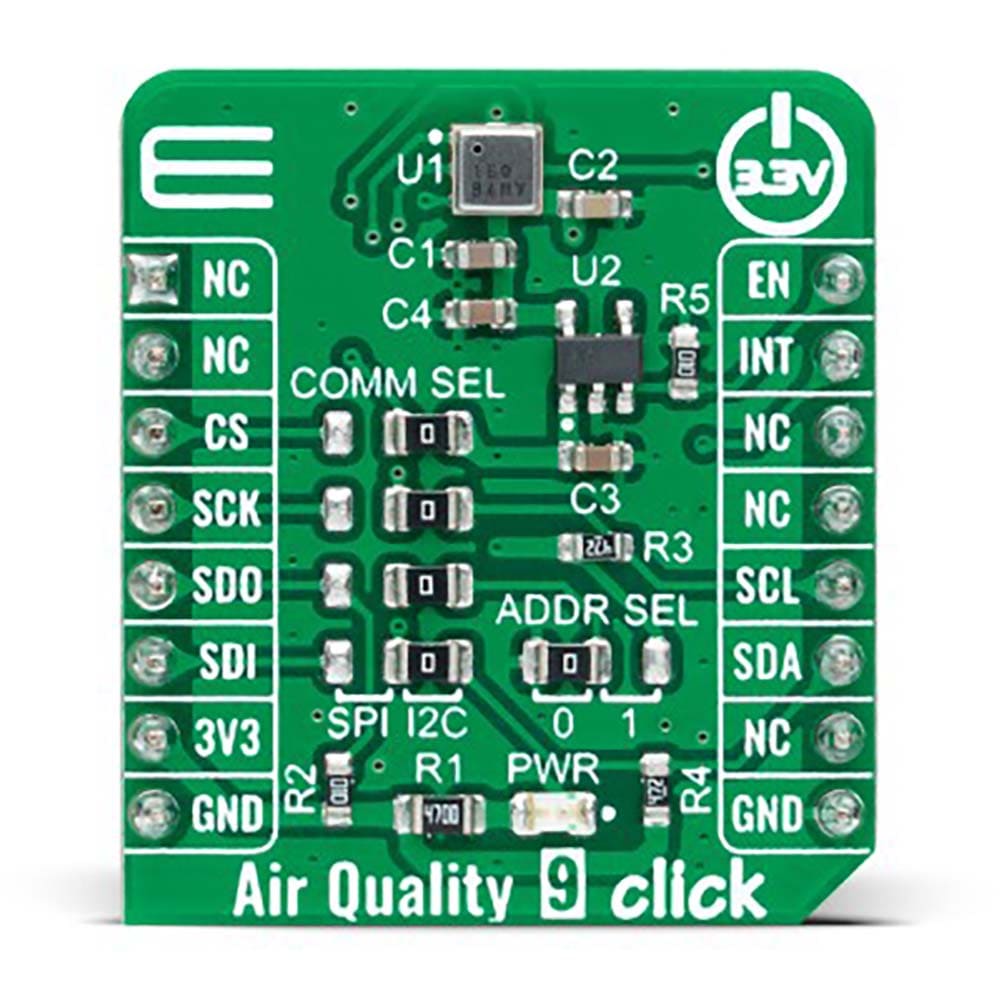
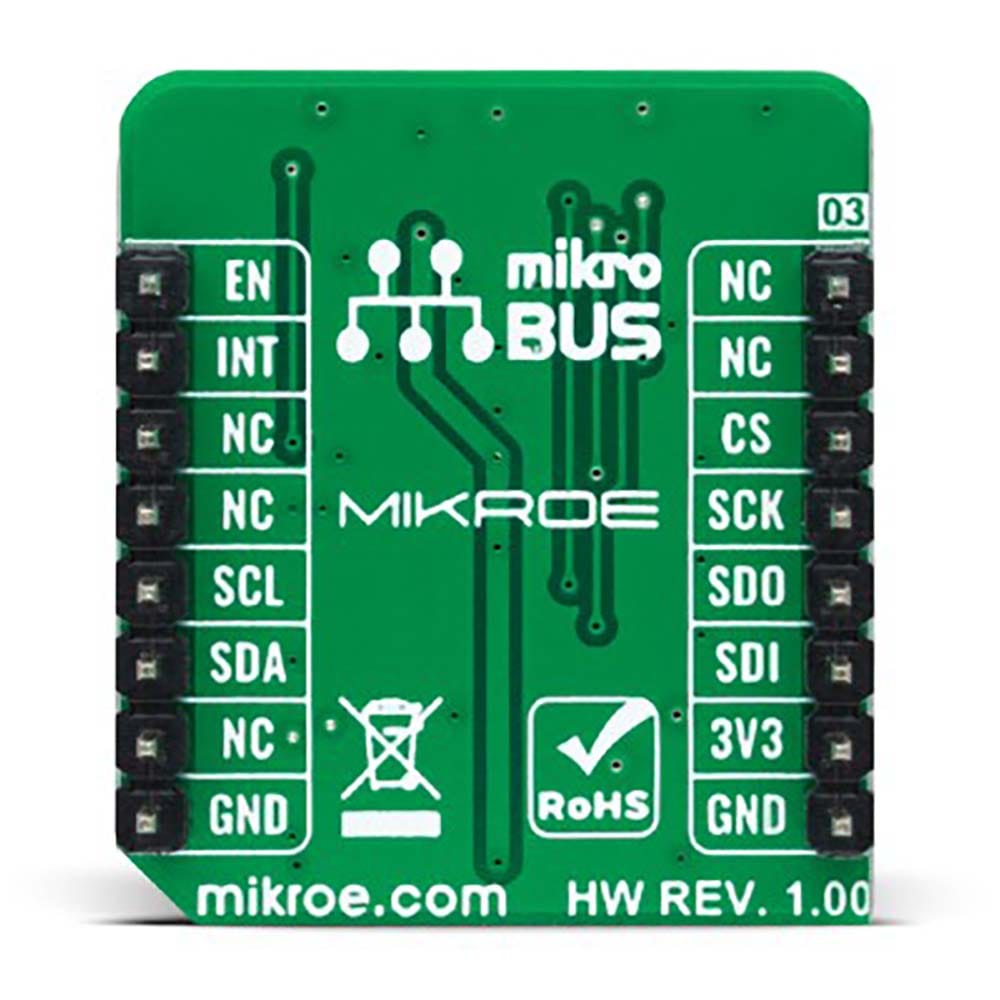
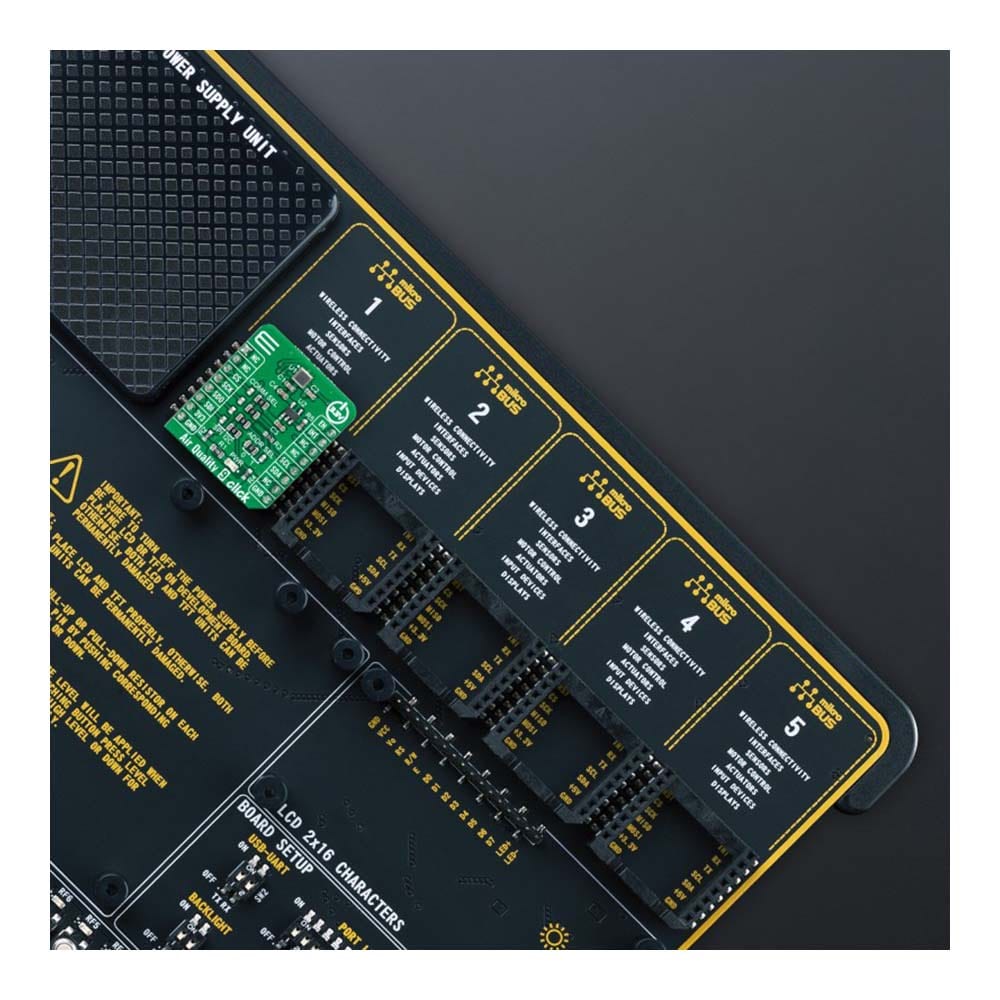
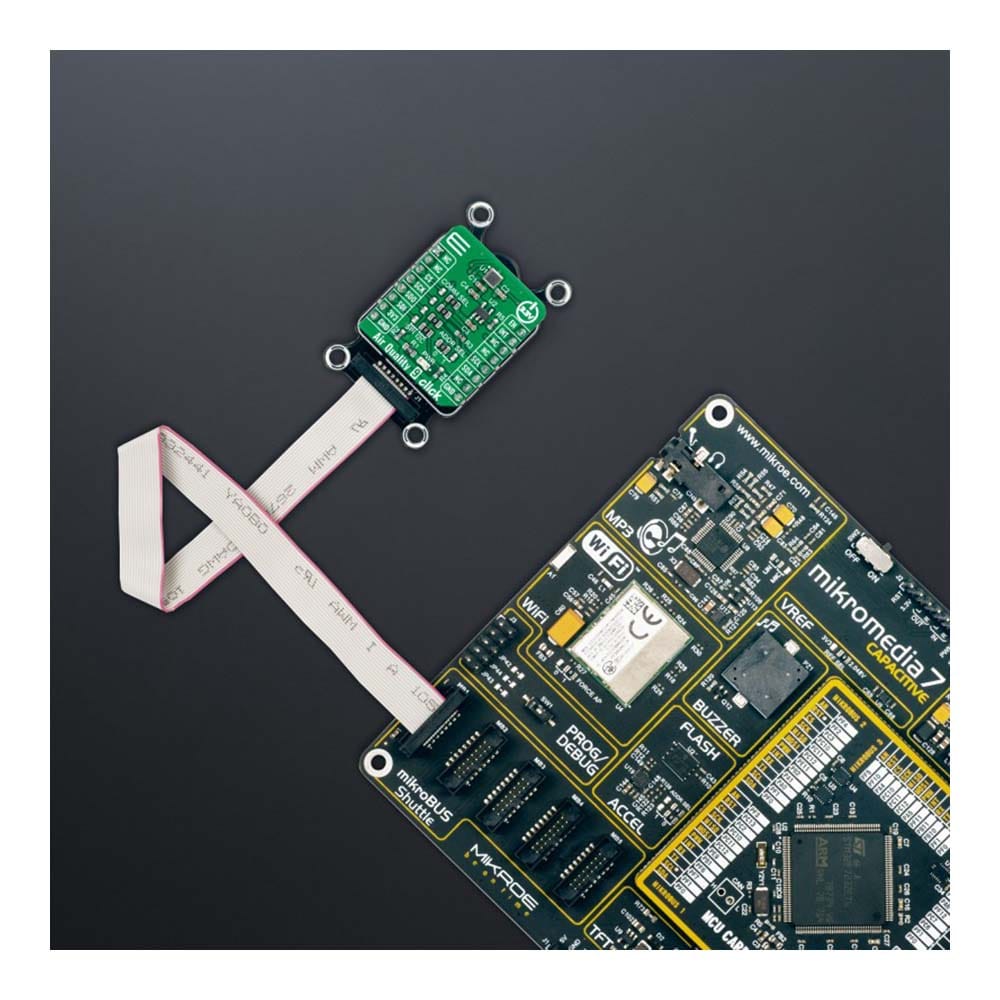
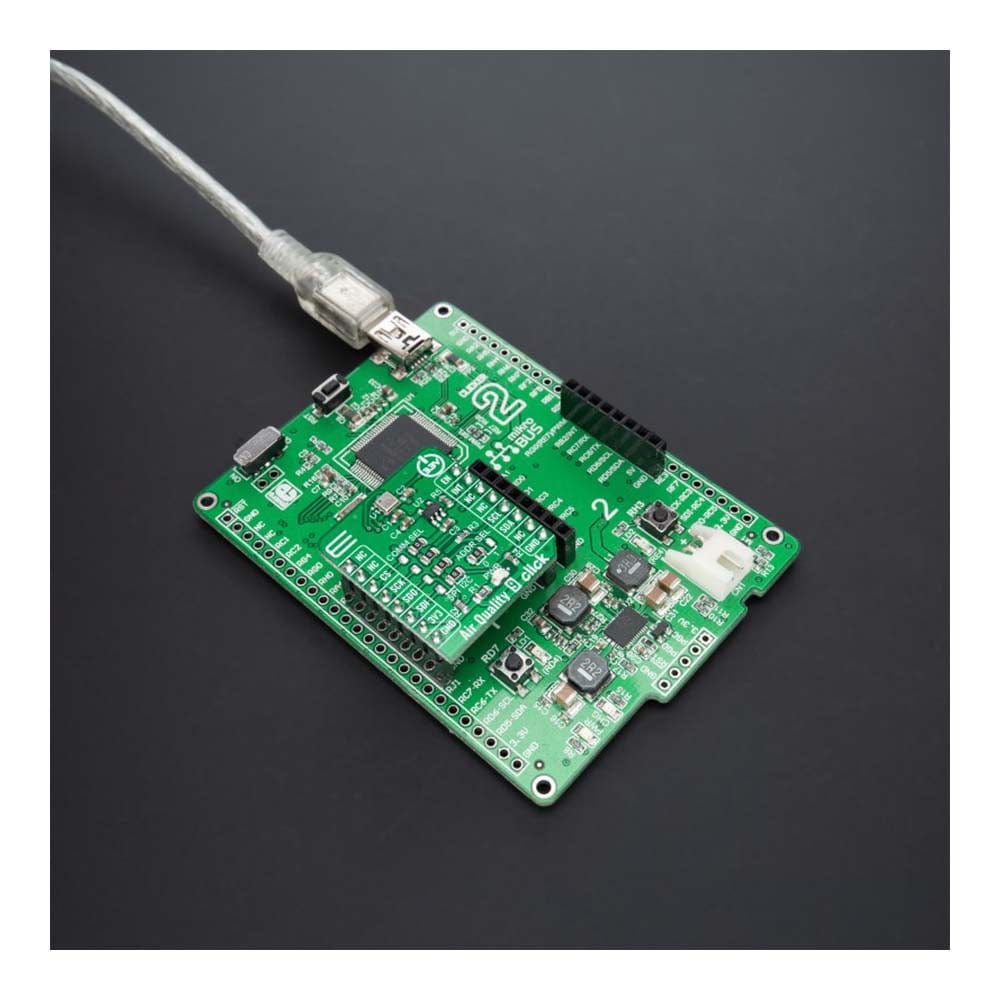
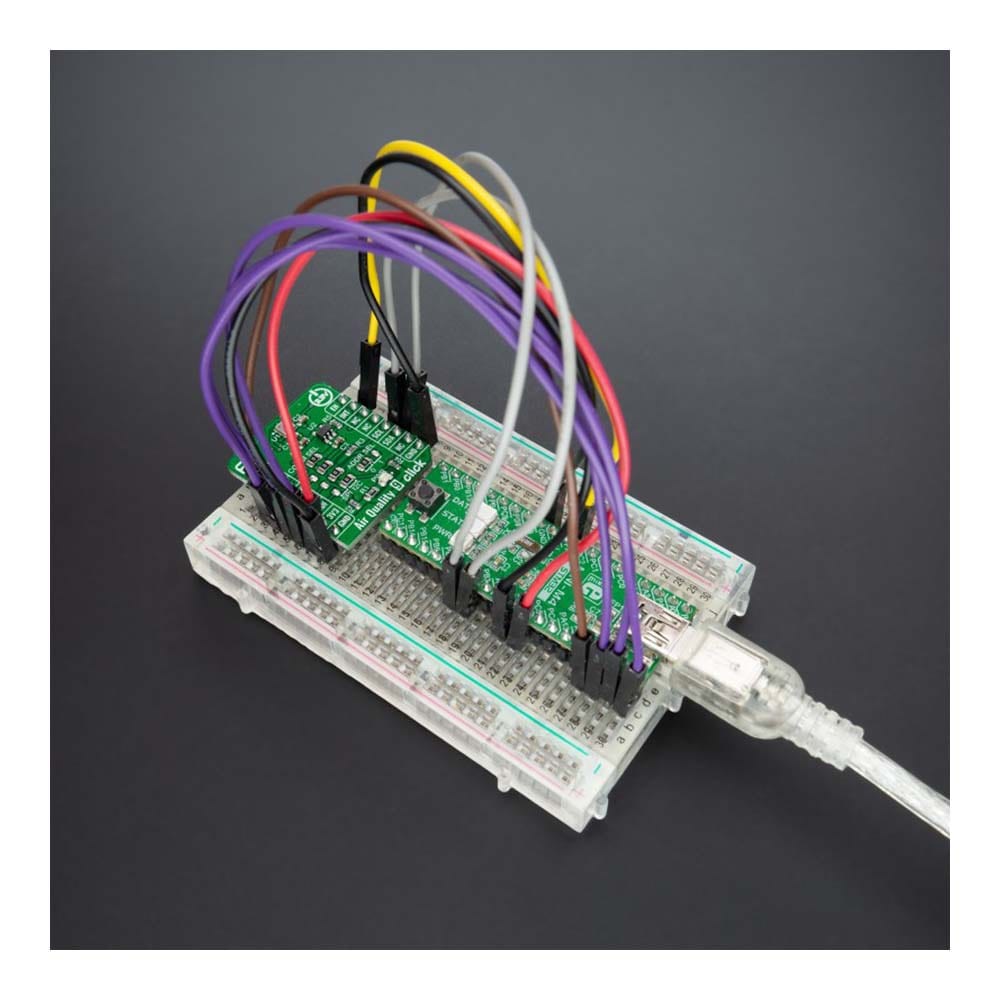
Overview
The Air Quality 9 Click Board™ is a compact add-on board containing a best-in-class air-quality sensing solution. This board features the ENS160, a digital multi-gas sensor solution based on metal oxide (MOX) technology with four MOx sensor elements from ScioSense. Each sensor element has independent hotplate control to detect a wide range of gases. The ENS160 series features TrueVOC™ air quality detection and supports intelligent algorithms, which calculate CO2 equivalents, TVOC, air quality index (AQI), and perform humidity and temperature compensation. This Click board™ is interface-configurable and characterized by outstanding long-term stability and lifetime. This Click board™ makes an excellent choice for detecting unhealthy air conditions, such as personal air-quality monitors, HVAC, smart thermostats, and other air quality-related applications.
The Air Quality 9 Click Board™ is supported by a mikroSDK compliant library, which includes functions that simplify software development. This Click board™ comes as a fully tested product, ready to be used on a system equipped with the mikroBUS™ socket.
Downloads
La carte Click Board™ Air Quality 9 est une carte complémentaire compacte contenant une solution de détection de la qualité de l'air de premier ordre. Cette carte comprend l'ENS160, une solution de capteur multigaz numérique basée sur la technologie des oxydes métalliques (MOX) avec quatre éléments de capteur MOx de ScioSense. Chaque élément de capteur dispose d'un contrôle de plaque chauffante indépendant pour détecter une large gamme de gaz. La série ENS160 est dotée de la détection de la qualité de l'air TrueVOC™ et prend en charge des algorithmes intelligents, qui calculent les équivalents CO2, TVOC, l'indice de qualité de l'air (AQI) et effectuent une compensation d'humidité et de température. Cette carte Click™ est configurable par interface et se caractérise par une stabilité et une durée de vie à long terme exceptionnelles. Cette carte Click™ constitue un excellent choix pour détecter les conditions d'air malsaines, telles que les moniteurs de qualité de l'air personnels, les systèmes CVC, les thermostats intelligents et d'autres applications liées à la qualité de l'air.
La carte Click Board™ Air Quality 9 est prise en charge par une bibliothèque compatible mikroSDK, qui comprend des fonctions qui simplifient le développement logiciel. Cette carte Click Board™ est un produit entièrement testé, prêt à être utilisé sur un système équipé du socket mikroBUS™.
| General Information | |
|---|---|
Part Number (SKU) |
MIKROE-5060
|
Manufacturer |
|
| Physical and Mechanical | |
Weight |
0.02 kg
|
| Other | |
Country of Origin |
|
HS Code Customs Tariff code
|
|
EAN |
8606027389078
|
Warranty |
|
Frequently Asked Questions
Have a Question?
Be the first to ask a question about this.







